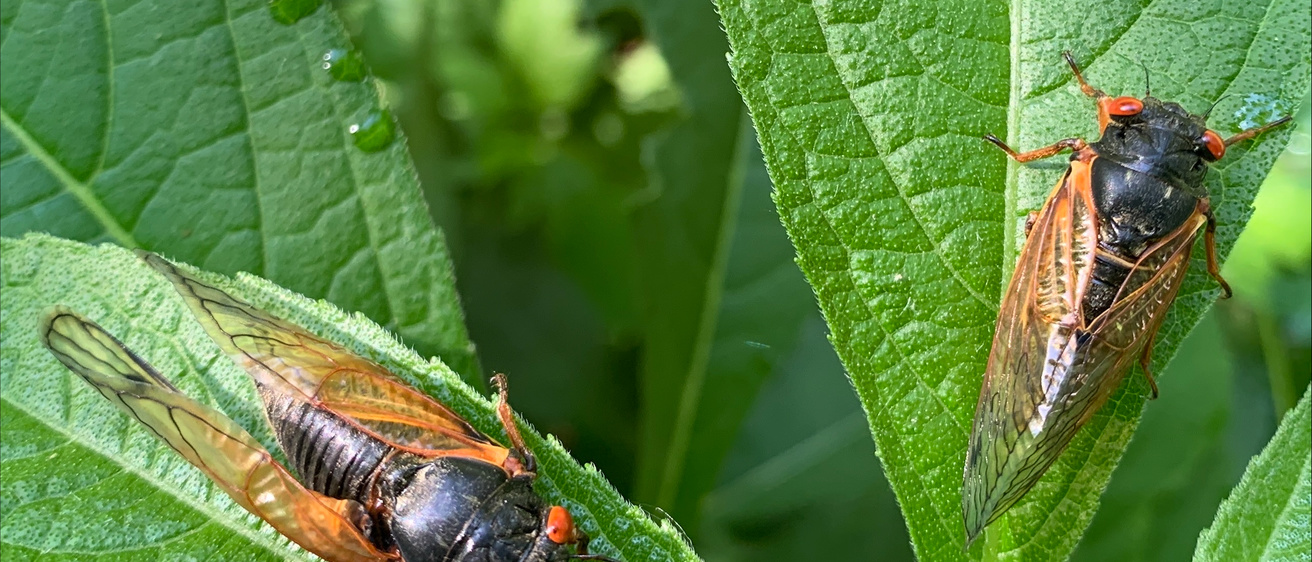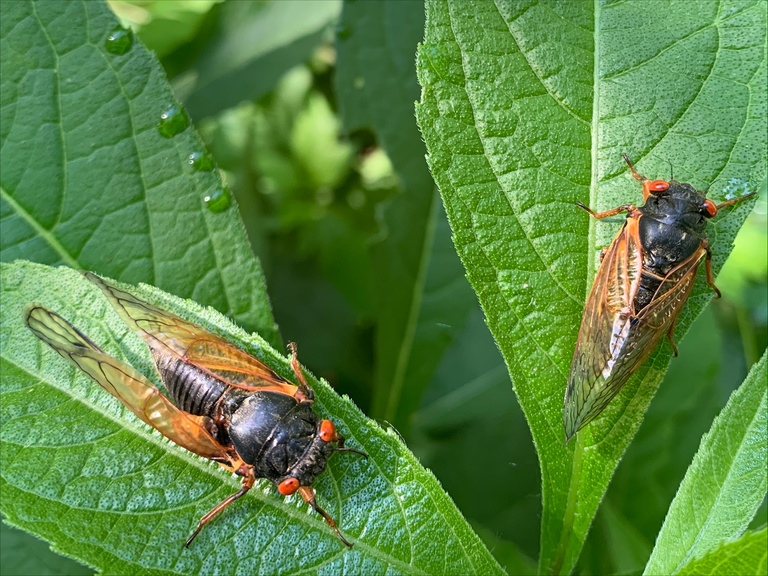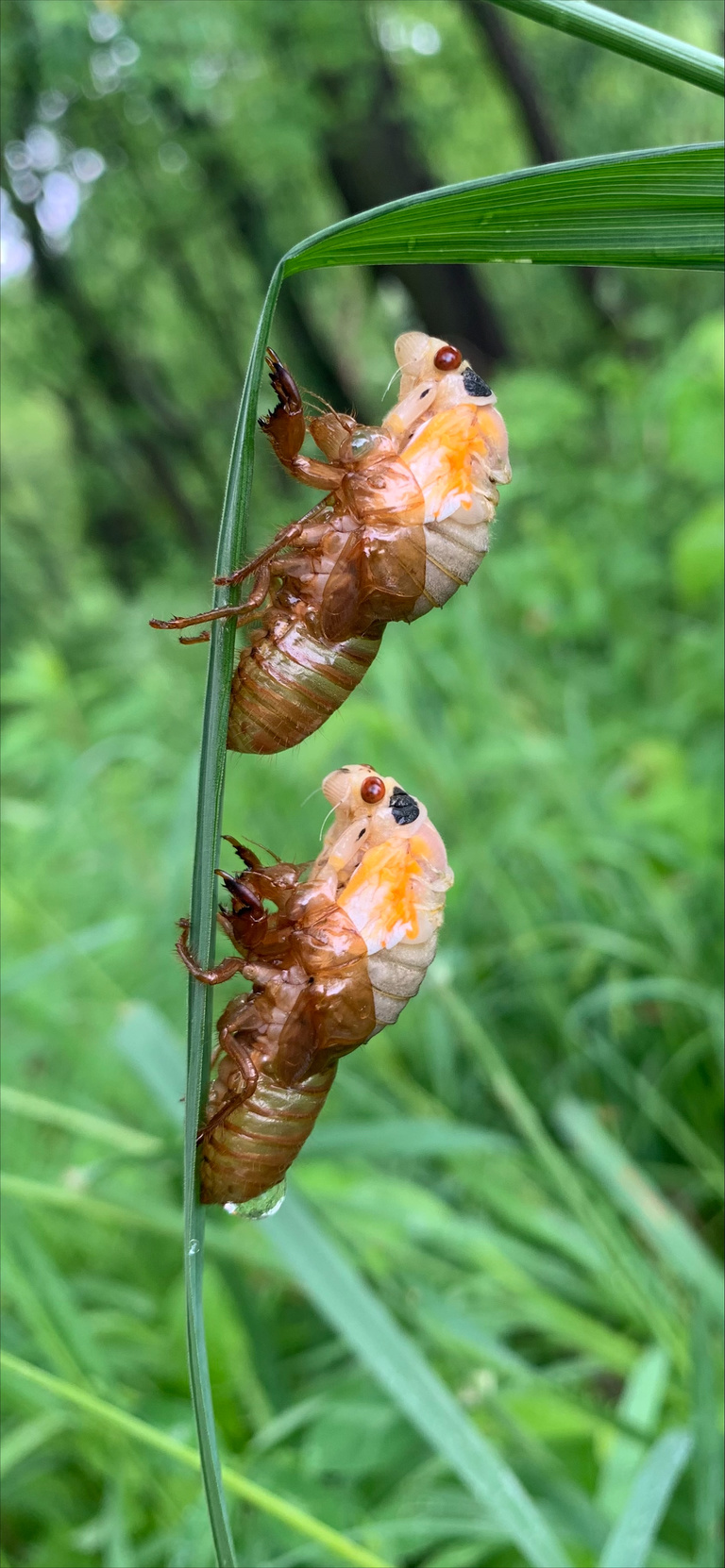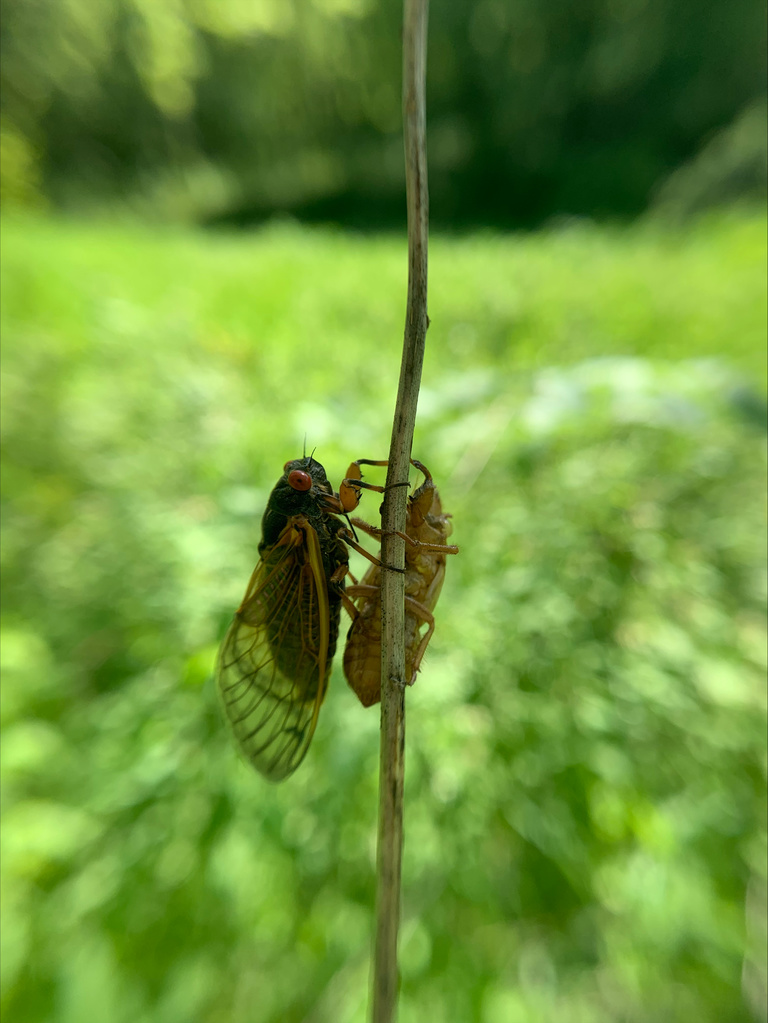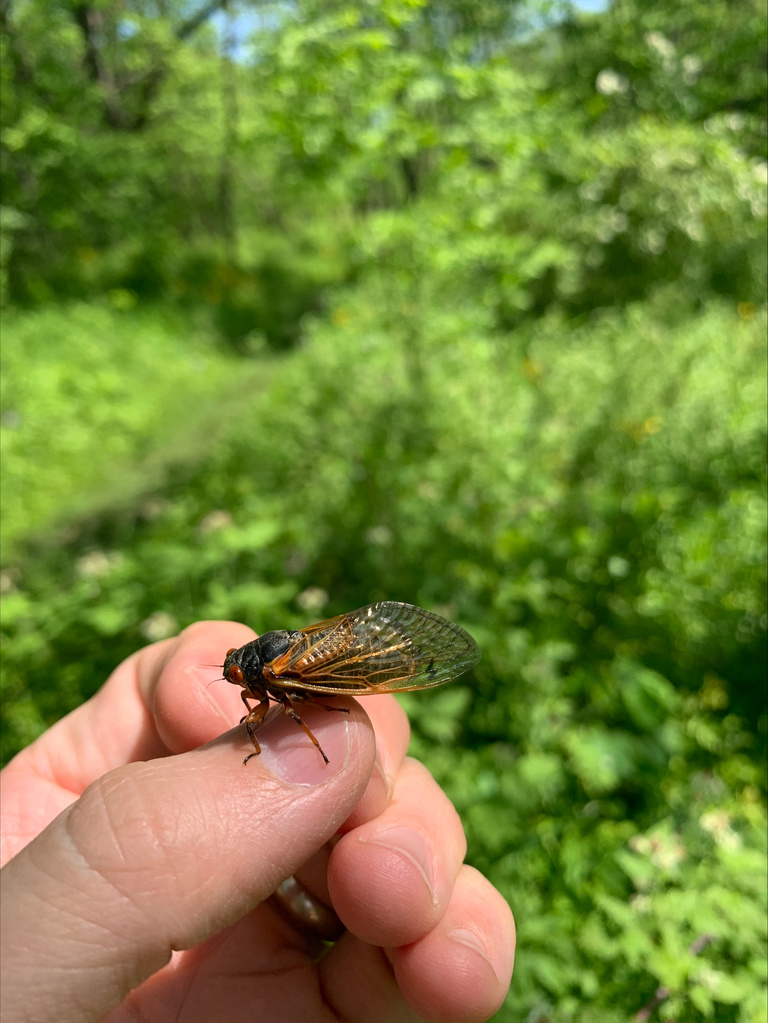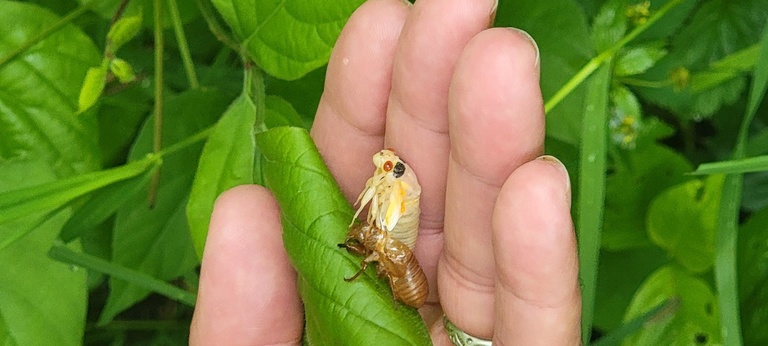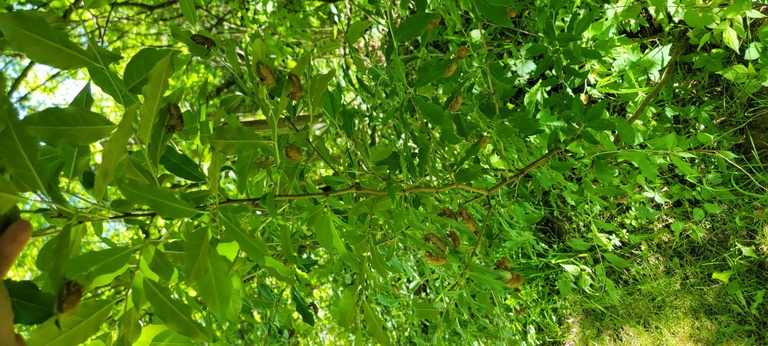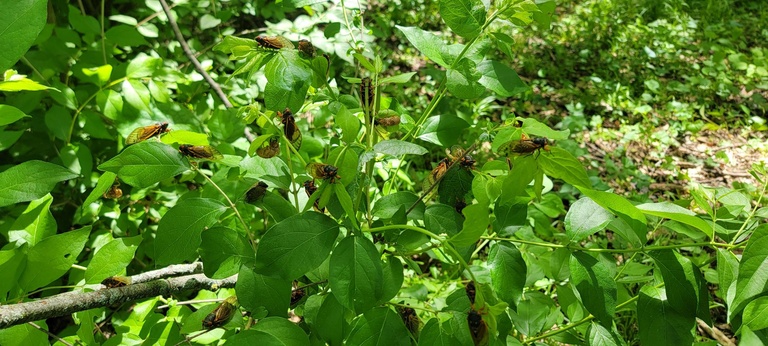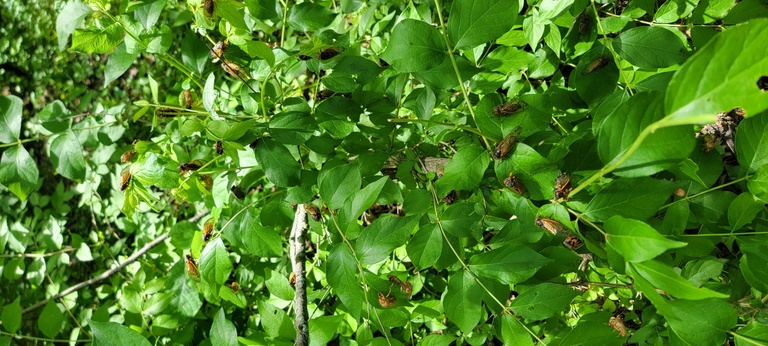The University of Iowa’s Macbride Nature Recreation Area (MNRA) is well known for hosting researchers, scientists, and scholars, but a rare appearance from millions of special guests has turned the campus woodland into a noisy tourist attraction for outdoor enthusiasts.
Two different cicada broods are emerging at the same time for the first time in more than 200 years. The Great Southern Brood is entertaining Iowans on the southern edge of the state, while the Northern Illinois Brood is singing its buzzy song to visitors at the MNRA and much of eastern Iowa.

Andrew Forbes, a professor of biology in the College of Liberal Arts and Sciences, and Tamra Elliott, a land manager at MNRA, have been educating “cicada tourists” and offer their expertise on nature’s latest phenomenon.
Q: What is a cicada brood and why are we starting to see cicadas emerge across Iowa?
A: Periodical cicadas emerge either every 17 years or every 13 years. Emergences happen in the form of geographically connected “broods,” and this year, one of those broods — the Northern Illinois Brood — is emerging across much of eastern Iowa. This is a 17-year brood, which means these cicadas last emerged in 2007. The 13-year brood, the Great Southern Brood, is also emerging this year, but it is only found in a few counties on the southeastern border of Iowa and does not overlap with the 17-year brood.

Interestingly, each brood contains multiple species, each with slightly different shape and different male chorusing songs. Periodical cicadas are most notable for emerging in incredibly large numbers, up to millions per acre, which overwhelms their many predators and allows them to lay enough eggs to ensure another generation.
Q: Where are cicadas most commonly found?
A: Periodical cicadas require deciduous trees — those that drop their leaves — for the entirety of their life cycle, so they are only found in places with trees. Because more than 75% of Iowa’s forested area was altered during colonization, cicadas lost a lot of their habitat and went locally extinct in several places. In Johnson County, they are rare to completely absent in most areas except for places that stayed continually in forest. The Macbride Nature Recreation Area (MNRA) is one of the places where land management practices have protected and restored forests, so we still find cicadas there today.
Q: Why do cicadas make noise?
A: The male cicadas congregate together in trees and “chorus” to attract females. Females then move to those chorusing centers to find mates. In the 17-year brood that is emerging in eastern Iowa, there are three different species, and each will “sing” a different chorus to attract the correct females.
Q: Are cicadas harmful? Do they bite or sting, or damage trees and plants?
A: No, no, no, and (mostly) no. Cicadas don’t hurt people and only have a negligible effect on trees. They do not have teeth or any kind of mouthparts they could use to bite, and they don’t have a stinger, just an organ that the females can use to lay eggs. They are slow moving and clumsy, have few defenses against predators, and do not seem to mind at all if they are picked up and gently handled. They do feed on plants and trees by sucking fluid from stems, but they take such a small amount of liquid that they really don’t hurt the plant. On the flip side, they emerge in such large numbers that they provide a huge amount of food for native birds and mammals, and when they die, their nutrients return to the soil, which is great for fertilizing forest plants and trees.
Q: How long can we expect our cicada guests to stay in Iowa?
A: They are here now and are actively chorusing at MNRA and several other eastern Iowa forests. They will only stick around for another four to five weeks and then their babies will go into the soil for another 17 years, so check them out now unless you want to wait until 2041.
